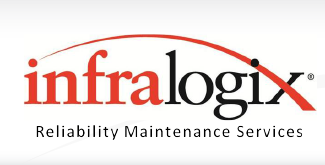Improving Asset Lifecycles with a Quality Maintenance Management System
Increasing an asset’s lifecycle is one of the best ways for a company to reduce its overall operation costs. Operating and maintaining large pieces of equipment are two of the most expensive aspects of running a business. Unless a company is prepared to go the extra mile when it comes to engineering in reliability and asset monitoring, they should be prepared to repair and replace large pieces of equipment on a more frequent basis. To avoid this, company’s need to learn how to improve asset lifecycles and thereby reduce operation costs across the board.
Consolidate Asset Management Data
Evaluating an asset’s lifecycle is all about having good asset management data, including the equipment’s age, functionality, usage levels, and repair history. All of that data won’t do much good, however, if no one has access to it. Many industrial manufacturing facilities and other process industries spend little to no time organizing their asset data. Someone might fail to adequately monitor the asset or they might forget to update the information in the system. When a Reliability Engineer, maintenance person, or someone from another department goes looking for that data, they might have to comb through multiple systems often with disparate information. If the asset management data is lacking or difficult to find, improving the asset’s lifecycle can be next to impossible.
Use a Holistic Approach to Reliability Engineering
When tracking and trending data in an asset’s lifecycle, it’s best to consider the full picture rather than just the immediate condition of the equipment. While the equipment might appear to be functioning normally one day, heavy usage and improper maintenance protocols can quickly change the situation.
This is why Reliability Engineers should consider a wide range of factors when evaluating an asset. They should take into consideration the age of the asset, how long it’s been in operation and how often it’s been used, where and how it’s being stored, and how often the asset has been inspected or adjusted. They should also look at other pieces of equipment that have been used in similar circumstances to get a more accurate sense of how long the company can expect to depend on the asset. All of this information will help the company get more use out of the asset in question.
Increase Communications Between Departments
Chances are that multiple departments will come to rely on the same asset at one point or another. The Reliability Engineer should be engaged with the sales department, facilities manager, and any other department head that might influence the procurement, installation, maintenance and overall usage of the asset. A new order or contract could drastically alter the asset’s effective lifecycle. All of this information should be made available to the Reliability Engineer so that they can adequately prepare for the coming workload.
From cradle to grave, every business should invest in reliable asset management data and share that information across departments. For more information on how to improve asset lifecycles, contact Infralogix.


